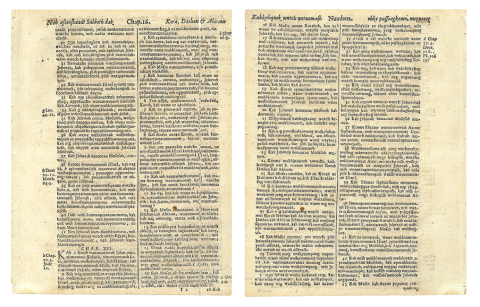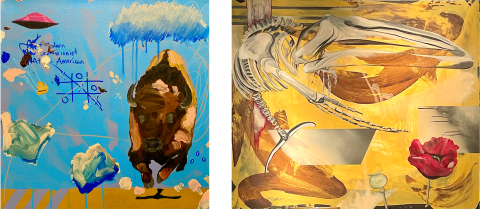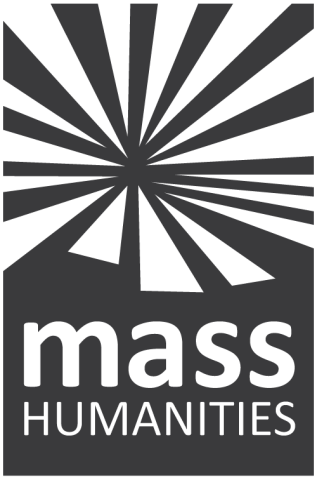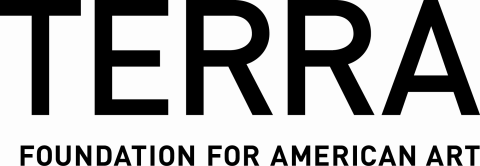
Boundless
Boundless is a nearly museum-wide exhibition that features work by Native American writers and artists, grounded in but not contained to the Northeast. On view August 29, 2023-January 7, 2024.

Boundless is a nearly museum-wide exhibition that features work by Native American writers and artists, grounded in but not contained to the Northeast. On view August 29, 2023-January 7, 2024.

Andrew Blackbird, birchbark binding with porcupine quill decoration by Margaret Boyd. History of the Ottawa and Chippewa Indians of Michigan. Ypsilanti, Mich.: The Ypsilantian Job Printing House, 1887. Amherst College Archives & Special Collections.
Boundless is a nearly museum-wide exhibition that features work by Native American writers and artists, grounded in but not contained to the Northeast. Boundless takes shape like water, moving across generations and geographies, and expanding conversations about kinship, presence, resistance, and history through its flow. The exhibition never chooses one path, but moves in multiple directions and broadens as it goes. A wide range of materials from Amherst College’s Collection of Native American Literature and the Mead form the core of the exhibition, and are joined by key works on loan from artists and other institutional and private collections.
The importance of place—including not only land, but water—is featured in Boundless. Water actively names the original peoples of what we now call southern New England. For example, Nipmuc means People of the Freshwater, while the Niantic are People of the Long-Necked Waters because their lands are near a bay; these names are at once a location and the name of its people. Each tribal name is filled with an image, a place, a relationship, and a story referenced in the works of Boundless.
Objects in the exhibition span from the present back to the eighteenth century, and range from paintings to sculpture, video, historical texts, basketry, cookbooks, and more. As well, some objects by non-Native artists provide contrast and context, and are themselves recontextualized.

John Eliot, Mamusse Wunneetupanatamwe Up-Biblum God [Eliot Indian Bible : Three Leaves from the Book of Numbers]. Printed by Samuel Green and Marmaduke Johnson, 1663. Younghee Kim-Wait (Class of 1982)/ Pablo Eisenberg Collection of Native American Literature. Amherst College Archives & Special Collections.
The broader Boundless project will include an open-access publication through Amherst College Press in 2024, K-12 digital curricular resources and materials developed with Genevieve Simermeyer (Osage Nation of Oklahoma) that will be available this November, in addition to other museum programming throughout the year. Reading rooms within the exhibition offer guests a chance to explore Native American-authored and illustrated books and zines for all ages.
The exhibition is researched and organized by writer and guest curator Heid E. Erdrich (Ojibwe).
Some featured artists and authors:
William Apess (Pequot/Mashpee Wampanoag)
Justin Beatty (Ojibwe, Garden River First Nation)
Acee Blue Eagle (Creek)
Andrea Carlson (Anishinaabe)
Brent Michael Davids (Stockbridge Munsee)
Jeremy Dennis (Shinnecock)
Melissa Jane Fawcett (Mohegan)
Eric Gansworth (Onondaga)
Sierra Henries (Nipmuc)
Sky Hopinka (Ho-Chunk)
Frank Buffalo Hyde (Onondaga)
Elizabeth James-Perry (Aquinnah Wampanoag)
Jonathan James-Perry (Aquinnah Wampagnoag)
E. Pauline Johnson (Mohawk)
Courtney M. Leonard (Shinnecock)
Samson Occom (Mohegan)
Alexander Posey (Creek)
Jaune Quick-to-See Smith (Salish-Kootenai/Metis)
Cara Romero (Chemehuevi)
Fritz Scholder (Luiseño)
Theresa Secord (Penobscot)
Mary Sully (Dakota)
Brittney Peauwe Wunnepog Walley (Nipmuc)
Marie Watt (Seneca)
Dyani White Hawk (Lakota)
Zitkala-Ša (Dakota)
Boundless was developed in dialogue with an advisory committee that includes members from the Nipmuc, Wampanoag, Shinnecock, and Mohegan, as well as other communities, and with the support of staff from Mead Art Museum, Amherst College Archives & Special Collections, the Five Colleges, and Native students. Special thanks to our Advisory Committee members: Jaime Arsenault, Jacquelyn Cabarrubia ’25, Brandon Castle, Lisa Crossman, Amanda Herman, Mike Kelly, Ellie Kerns ’24, Courtney M. Leonard, Aaron Miller, Elizabeth James-Perry, Emily Potter-Ndiaye, Rachel Beth Sayet, Kimberly Toney, and Kiara Vigil.
The exhibition was also supported by academic-year curatorial and research interns: Jacquelyn Cabarrubia ’25, Catherine Charnoky ’24, Cameron Findlay ’23 (Smith College), and Ziji Zhou ’25. The Mead summer 2023 curatorial and education interns Isabella Fuster-Crichfield ’26, Samuel Nkengla ’26, and Max Valdez ’24 also worked on materials for Boundless.
Tábūtní, kutâputush, pidamaya, nt'oyaxsn, miigwech, thanks!

Left: Frank Buffalo Hyde (Onondaga/Nez Perce, born 1974). I got rambling on my mind, 2021–2022.Acrylic on canvas. Museum Purchase.
Right: Courtney Leonard (Shinnecock, born 1980). BREACH: Logbook 21 | Collider Study #1. Mixed-media acrylic on canvas. Museum Purchase.
Boundless and related education initiatives are made possible with financial support from the Terra Foundation for American Art, the Native Arts and Cultures Foundation, Five Colleges/NAIS Mellon, and Mass Humanities' Expand Massachusetts Stories grant program, with support from the Mass Cultural Council.


